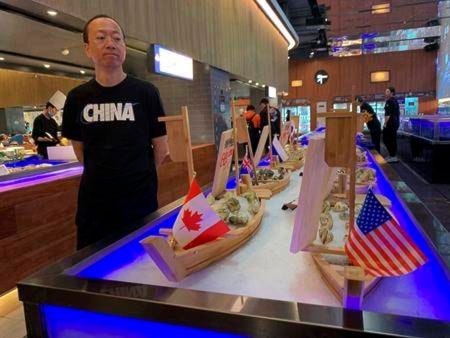U.S. officials listed $300 billion more of Chinese goods for possible tariff hikes while Beijing vowed Tuesday to “fight to the finish” in an escalating trade battle that is fueling fears about damage to global economic growth.
The U.S. Trade Representative’s Office issued its target list after Beijing announced tariff hikes Monday on $60 billion of American goods in their spiraling dispute over Chinese technology ambitions and other irritants. Chinese authorities were reacting to President Donald Trump’s surprise decision last week to impose punitive duties on $200 billion of imports from China.
READ MORE: U.S. hikes tariffs on Chinese goods, Beijing vows retaliation
“China will fight to the finish,” said a foreign ministry spokesman, Geng Shuang.
“We have the determination and capacity to safeguard our interests,” Geng said. “China’s countermeasures have shown our determination to safeguard the multilateral trade system.”
Trump downplayed the standoff that sent global markets plummeting to start the week, calling it “a little squabble” between friends.
The latest U.S. list of 3,805 product categories is a step toward carrying out Trump’s May 5 threat to extend punitive 25% duties to all Chinese imports, the USTR said. It said a June 17 hearing would be held before Washington decides how to proceed.
The list “covers essentially all products” not already affected by punitive tariffs, the USTR said.
It includes laptop computers, saw blades, turbine parts, tuna and garlic. The USTR noted it excludes pharmaceuticals and rare earths minerals used in electronics and batteries.
“The risk of further escalation is far from over,” said Timme Spakman of ING in a report.
Also Tuesday, China’s tightly controlled social media were filled with comments lambasting Washington following weeks of little online discussion of the dispute. That suggested official censors might have blocked earlier comments but started allowing those that favour Beijing to deflect potential criticism of President Xi Jinping’s government.
The United States is “sucking the blood of the Chinese,” said a comment left on the “Strong Country” blog of the ruling Communist Party’s newspaper People’s Daily. Another comment on the site said, “Why are Chinese people bullied? Because our hearts are too soft!”
Trump started raising tariffs last July over complaints China steals or pressures foreign companies to hand over technology and unfairly subsidizes businesses Beijing is trying to build into global leaders in robotics and other fields.
A stumbling block has been U.S. insistence on an enforcement mechanism with penalties to ensure Beijing carries out its commitments.
Odds of a settlement “remain high,” said Mark Zandi of Moody’s Analytics in a report. “But suddenly a number of other scenarios seem possible, even one in which the U.S., China and the global economy suffer a recession.”
Asian stock markets fell Tuesday as the fight, with no negotiated settlement in sight, though markets in the U.S. and Europe recovered some, but not all of the losses Monday, when the Dow plunged more than 600 points.
That came after China’s Finance Ministry announced duties of 5% to 25% on about 5,200 American products, including batteries, spinach and coffee.
Joe McDonald, The Associated Press
